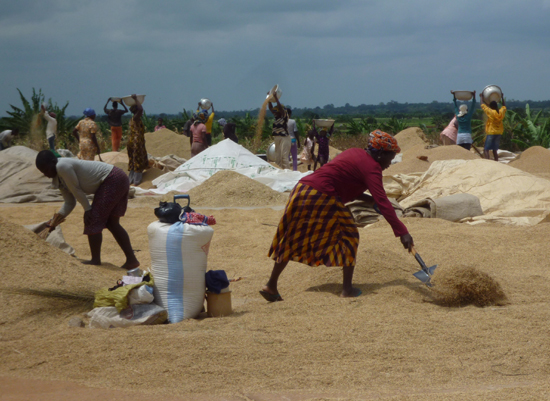The notion of Africa as being merely a source of precious commodities for developed countries is slowly changing and shifting more towards domestic consumption. African commodities are increasingly carving out their place in local markets as investors, bankers, and trading houses are beginning to do their best to take advantage of nascent commodity trading within the black continent. The desire to do business with African commodities in Africa is reinforced by the soaring demand in China. McKinsey, management consultancy, predicts that the spending of African consumers will have been 1.4 trillion USD in six years’ time and envisages that Africa’s working age population will reach 1.1 billion people by 2040. Venkatramani Srivathsan, the head of Africa and the Middle East for Singapore-listed commodities trader Olam, thinks that any statistics we might take are uni-directional so there is no reason for demand to look the other way. He added that for businesses like Olam, looking into Africa as a potential market, particularly economies like Mozambique or Nigeria are very enticing. Olam is already now sourcing about 25 percent of its sales revenues from Africa in addition to its investment of almost 1.7 billion Singapore dollars (about 1.3 billion USD) on the continent.
Naturally, doing business in a rather volatile Africa is challenging and the success relies upon adaption to the tastes and changing consumption trends of each and every market within Africa. Olam, which invests in food processing, the packaged food business, and plantations, had to introduce delicate changes and differences in its Western Africa tomato paste to match different palates. Moreover, the company has been also “forced” to adapt its Nigerian demand for more sophisticated biscuits. Prominent oil trader Vitol has also focused on investments in the continent’s downstream sector as it is currently building a new refinery in Uganda. This project is to help meet demand for the 440-million-USD-a-day fuel market. Although traditional oil traders still export African crude oil to the West, Vitol sees opportunities in fuel demand in Africa itself. The company estimates that the continent’s fuel demand grows about 3 percent annually and is co-driven by growing power markets. Therefore, the company is targeting supplies of niche fuels like liquefied petroleum gas into large North African cities and Nigeria. The distinct advantage of petroleum gas is its portability in canisters. The examples of Vitol’s innovativeness with portable canisters for petroleum gas as well as Olam’s experiments with packaging demonstrate that doing successful business in African commodities requires constant innovations as even well-established brands do need to keep modifying tastes and innovating all the time.




